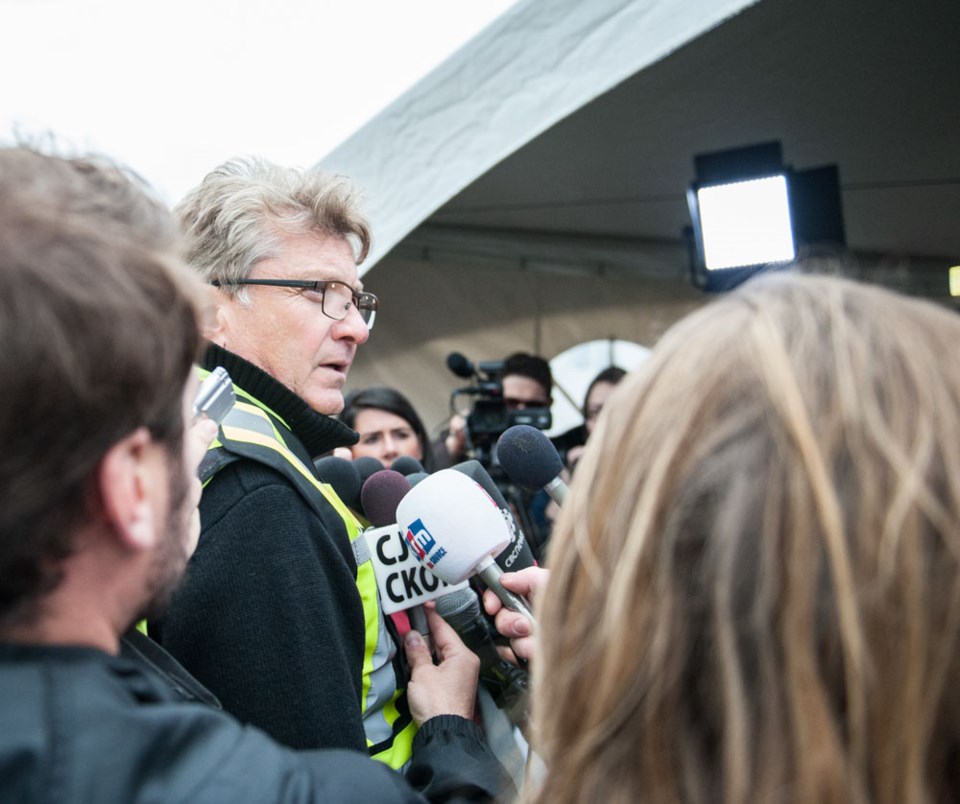Regina – On Feb. 11 Mike Monea, president Carbon Capture & Storage Initiatives with SaskPower, spoke with Pipeline News in response to the Canadian Centre for Policy Alternatives report entitled SaskPower’s Carbon Capture Project – What Risk? What Reward?
“They really wanted to discuss why we didn’t do more renewables and why we didn’t we spend $1.3 billion building more wind turbines,” Monea said.
He noted such arguments are typical for those who don’t see the “balance of power needs” a company like SaskPower has.
“They don’t understand baseload power as well as they should. Actually, we wish they would come and talk to us so they can get a grasp of what we have to deal with here.
“We are increasing our renewables as much as we possibly can. We’re going to be at 10 per cent (wind generation) here within the next couple years, which is pretty good. We have limited hydro because of the way our province is built. We have run of the river hydro, and they are becoming very expensive themselves.
“Hydro’s not very good where it’s flat, and solar’s not very good at night.”
Roughly 25 per cent of SaskPower’s generating capacity is from renewable sources. Coal accounts for 44 per cent of power production.
“The story is we need everything. We just don’t have an opportunity for nuclear now. That’s so far away, the cost is so great, with permitting and construction, it’s a long term project. Everything else, we need to seriously look at. We need to maximize our renewable portfolio while having baseloads so people aren’t mad at us when they turn their switch on and don’t have power.”
At a press conference earlier in the day he noted there were questions about why they haven’t put more money into researching batteries for wind power.
“In my mind, SaskPower needs to do a better job in communicating how power works, why we’re a reliable service and what we’re doing to keep our rates as low as possible,” Monea said.
“Also, in the Estevan area, how we’re trying to keep jobs in the coal industry while creating a low-emission energy source.”
He noted the other units at Boundary Dam, Shand and Poplar River Power Stations are not low-emission sources.
The final number for the total cost was roughly $1.467 billion, including the rebuild of Unit 3 at Boundary Dam Power Station and the new carbon capture plant.
“The capture side is on budget, but the total cost, roughly $1.4 billion, includes $240 million from the federal government of Canada,” he said.
A period of final adjustments which will take several months will refine that number. Monea doubts it will go higher.
The Canadian Centre for Policy Alternatives report talks about how SaskPower could have spent that money on wind power generation. Monea said, “You need a lot of base power to support your renewables. You can’t really have 100 per cent renewables. If you do, you’re not going to have power all the time. That’s what people have difficulty understanding.
“Every time we have to replace a plant, we can’t just put up wind turbines. It doesn’t work. It’s too simplistic. It doesn’t work that way,” he said.
“Last Sunday we hit a peak (of power consumption) at 6 p.m., suppertime. We had one megawatt coming from our wind turbines. There was no wind blowing. What did we use? We used coal-fired plants for the baseload, so nobody had disruption in their power.”
That one megawatt was out of an installed base of 210 megawatts of potential wind power generation in this province. Four per cent of SaskPower’s generation capability is wind.
As of Jan. 30, the capture plant was capturing roughly 2,600 tonnes per day, and he expected it to ramp up to full capacity of 3,200 tonnes in the following weeks.
The report suggested Cenovus might not want all that CO2, which would mean lost sales for SaskPower.
Asked if Cenovus still wanted all that CO2, given that oil had dropped in price by more than half, Monea responded, “They are a company in for the long term for enhanced oil recovery. Within a few months, they will be taking 100 per cent of our capacity and applying it to EOR.
“These are 30-40 year projects. You can’t let a trough in an oil price affect your injection process.”
By that point, Aquistore had not yet taken any CO2. They were conducting infectivity tests. Since the well had been sitting for two years, it needed some maintenance before proceeding with injection.
The price for CO2 is fixed, with an indexed escalator clause. The price does not go down if the price of oil goes down, he said.
There has been a lot of international interest in the project, and SaskPower has been leading numerous tours throughout the plant. “I counted up the countries the other day, and it came to 23. It sounded like that Hank Snow song – I’ve been Everywhere.”




